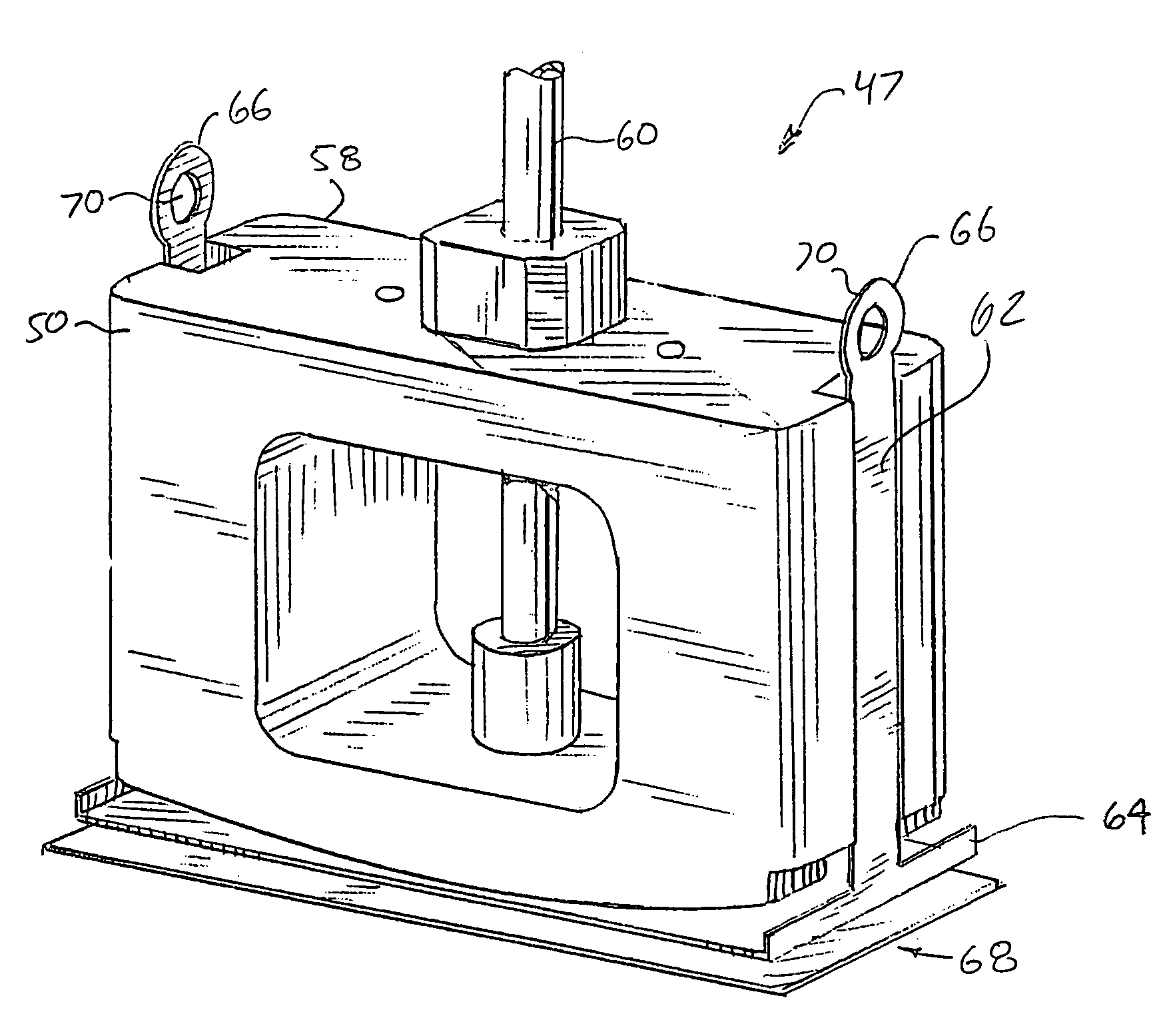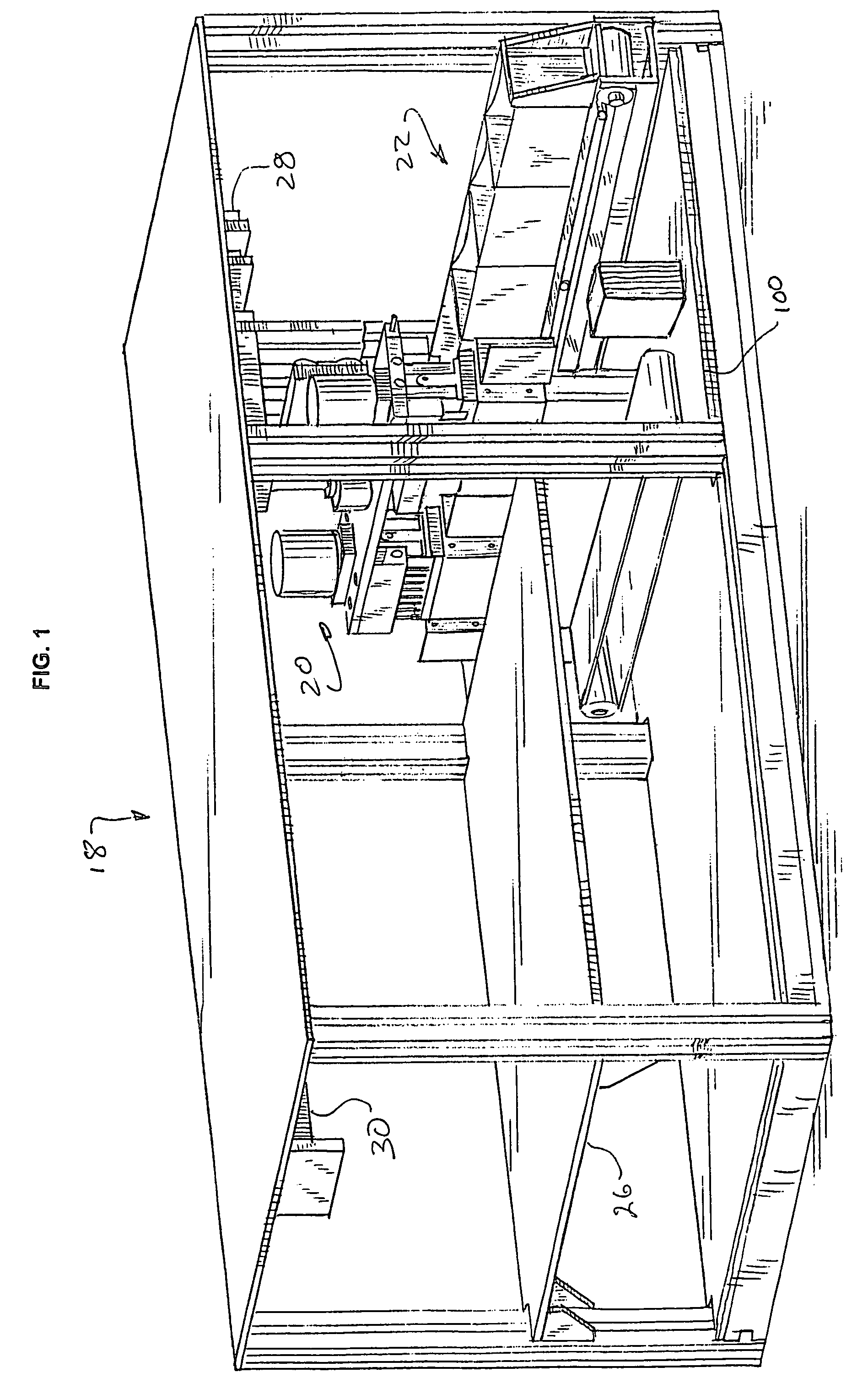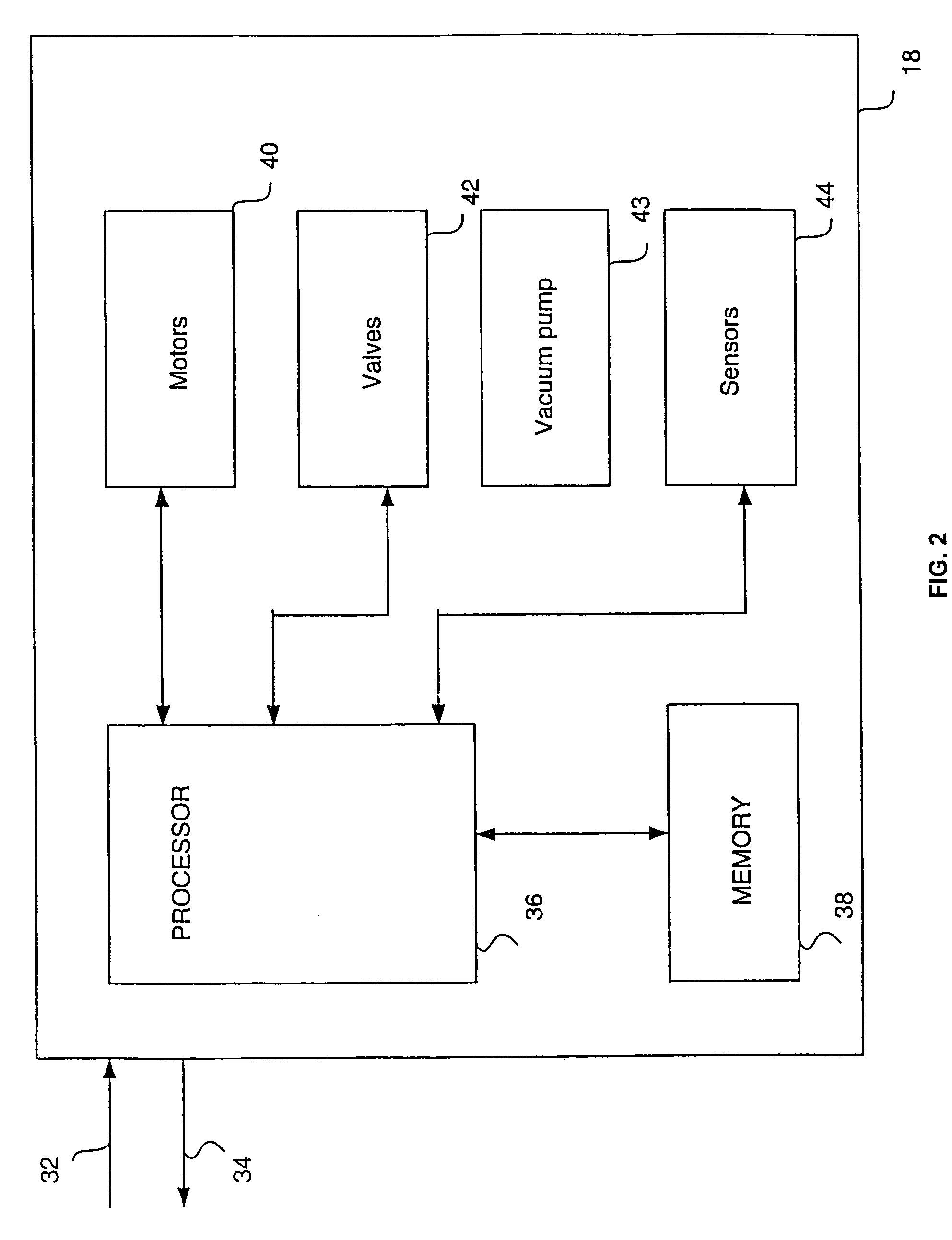Method and apparatus for automated coverslipping
a technology of automatic covering and specimen, applied in the direction of instruments, analysis using chemical indicators, transportation and packaging, etc., can solve the problems of numerous coverglasses breaking, difficult to handle and separately remove coverglasses, and considerable bending moment applied in the middle of the coverglass, so as to reduce the possibility of static electricity and small restoring force
- Summary
- Abstract
- Description
- Claims
- Application Information
AI Technical Summary
Benefits of technology
Problems solved by technology
Method used
Image
Examples
Embodiment Construction
[0027]Referring to FIG. 1, there is shown a perspective view of an automated coverslipper module 18. The automated coverslipper module 18 includes a head portion 20 (see e.g., FIG. 3), a cartridge supply and dispense device 22 (see e.g., FIG. 7), and a flat portion 24 upon which a tray 26 (see e.g., FIG. 9) sits. The head portion 20 moves in one direction using motor 28 to move along rail 30.
[0028]Referring to FIG. 2, there is shown a block diagram of the automated coverslipper module 18. The automated coverslipper module includes inputs / outputs 32, 34. In one embodiment, the automated coverslipper module is integral with other components of a tissue staining instrument (i.e., contained within a single device). See U.S. patent application Ser. No. 60 / 372,506 filed on Apr. 15, 2002 and incorporated by reference in its entirety. In an alternative embodiment, the automated coverslipper module may be a physically separate, yet electronically connected device, interacting with other modu...
PUM
| Property | Measurement | Unit |
|---|---|---|
| flexible | aaaaa | aaaaa |
| constant curve radius | aaaaa | aaaaa |
| conductive | aaaaa | aaaaa |
Abstract
Description
Claims
Application Information
 Login to View More
Login to View More - R&D
- Intellectual Property
- Life Sciences
- Materials
- Tech Scout
- Unparalleled Data Quality
- Higher Quality Content
- 60% Fewer Hallucinations
Browse by: Latest US Patents, China's latest patents, Technical Efficacy Thesaurus, Application Domain, Technology Topic, Popular Technical Reports.
© 2025 PatSnap. All rights reserved.Legal|Privacy policy|Modern Slavery Act Transparency Statement|Sitemap|About US| Contact US: help@patsnap.com



